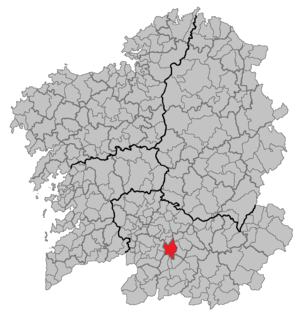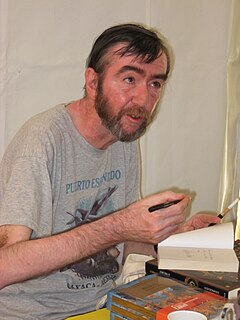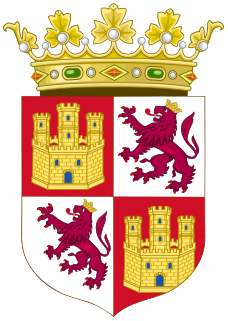
The Inquisition was a group of institutions within the Catholic Church whose aim was to combat heresy, conducting trials of suspected heretics. Studies of the records have found that the overwhelming majority of sentences consisted of penances, but that cases of repeat unrepentant heretics were handed over to the secular courts, which generally resulted in execution or life imprisonment. The Inquisition had its start in 12th-century Kingdom of France, with the aim of combating religious deviation, particularly among the Cathars and the Waldensians. The inquisitorial courts from this time until the mid-15th century are together known as the Medieval Inquisition. Other groups investigated during the Medieval Inquisition, which primarily took place in France and Italy, including the Spiritual Franciscans, the Hussites, and the Beguines. Beginning in the 1250s, inquisitors were generally chosen from members of the Dominican Order, replacing the earlier practice of using local clergy as judges.

Alfonso X was the king of Castile, León and Galicia from 30 May 1252 until his death in 1284. During the election of 1257, a dissident faction chose him to be king of Germany on 1 April. He renounced his claim to Germany in 1275, and in creating an alliance with the Kingdom of England in 1254, his claim on the Duchy of Gascony as well.

Tomás de Torquemada, also anglicized as Thomas of Torquemada, was a Castilian Dominican friar and first Grand Inquisitor in Spain's movement to homogenize religious practices with those of the Catholic Church in the late 15th century, otherwise known as the Spanish Inquisition.

Allariz is a town and municipality in the province of Ourense, Autonomous Community of Galicia, Spain. It occupies the center of the western half of the province, connecting with the towns (concellos) of Taboadela, Paderne, Sandiás, Vilar de Santos, Rairiz de Veiga, Xunqueira de Ambía, A Merca and A Bola. The area of the municipality is 85,3 km² and there are 6.188 inhabitants in 16 parishes.

The 1383–1385 Portuguese interregnum was a civil war in Portuguese history during which no crowned king of Portugal reigned. The interregnum began when King Ferdinand I died without a male heir and ended when King John I was crowned in 1385 after his victory during the Battle of Aljubarrota.

Bertrand du Guesclin, nicknamed "The Eagle of Brittany" or "The Black Dog of Brocéliande", was a Breton knight and an important military commander on the French side during the Hundred Years' War. From 1370 to his death, he was Constable of France for King Charles V. Well known for his Fabian strategy, he took part in seven pitched battles and won the five in which he held command.

Zork: Grand Inquisitor is a graphic adventure game developed and published by Activision, and released for Windows in 1997; a second edition for Macintosh was released in 2001. The game is the twelfth in the Zork series, and builds upon both this and the Enchanter series of interactive fiction video games originally released by Infocom. The game's story focuses on the efforts of a salesperson who becomes involved in restoring magic to Zork while thwarting the plots of a tyrannical figure seeking to stop this. The game features the performances of Erick Avari, Michael McKean, Amy D. Jacobson, Marty Ingels, Earl Boen, Jordana Capra, Dirk Benedict, David Lander and Rip Taylor.

Nicholas Eymerich was a Roman Catholic theologian in Medieval Spain and Inquisitor General of the Inquisition in the Crown of Aragon in the later half of the 14th century. He is best known for authoring the Directorium Inquisitorum, that mostly summarized previous texts and mores.

The White Company is a historical adventure by British writer Arthur Conan Doyle, set during the Hundred Years' War. The story is set in England, France and Spain, in the years 1366 and 1367, against the background of the campaign of Edward the Black Prince, to restore Peter of Castile to the throne of the Kingdom of Castile. The climax of the book occurs before the Battle of Nájera. Doyle became inspired to write the novel after attending a lecture on the Middle Ages in 1889. After extensive research, The White Company was published in serialised form in 1891 in The Cornhill Magazine. Additionally, the book is considered a companion to Doyle's 1905–06 Sir Nigel, which explores the early campaigns of Sir Nigel Loring and Samkin Aylward.

Valerio Evangelisti was an Italian writer of science fiction, fantasy, historical novels, and horror. He is known mainly for his series of novels featuring the inquisitor Nicolas Eymerich and for the Nostradamus trilogy, all bestsellers translated into many languages. Some of his books are seen as part of the body of literary works known as the New Italian Epic.

The Directorium Inquisitorum is Nicholas Eymerich's most prominent and enduring work, written in Latin and consisting of approximately 800 pages, which he had composed as early as 1376. Eymerich had written an earlier treatise on sorcery, perhaps as early as 1359, which he extensively reworked into the Directorium Inqusitorum. In compiling the book, Eymerich used many of the magic texts he had previously confiscated from accused sorcerers. It can also be considered as an assessment of a century and half of official Inquisition in the "albigensian" country.

The Battle of Montiel was a battle fought on 14 March 1369 between the Franco-Castilian forces supporting Henry of Trastámara and the Granadian-Castilian forces supporting the reigning Peter of Castile.

Lope de Barrientos (1382–1469), sometimes called Obispo Barrientos, was a powerful clergyman and statesman of the Crown of Castile during the 15th century, although his prominence and the influence he wielded during his lifetime is not a subject of common study in Spanish history.
Torreperogil is a town over 7,500 inhabitants in Province of Jaén, Andalucia, Spain. Their people in the "comarca"(region) are known by the use of the exclamatory phrase "¡Bárcia!".Other places in this municipality are El Paso where you can have a picnic or barbecue, Los Pinos, El Prado is a square you can walk and see the Cazorla Mountains, and Las Torres Oscuras. Las Torres Oscuras are the oldest part of the town, with architecture of the Middles Ages. It is also the location of several non-permanent events.

Captain from Castile is a historical adventure film released by 20th Century Fox in 1947. Directed by Henry King, the Technicolor film stars Tyrone Power, Jean Peters, and Cesar Romero. Shot on location in Michoacán, Mexico, the film includes scenes of the Parícutin volcano, which was then erupting. Captain from Castile was the feature film debut of Jean Peters, who later married industrialist Howard Hughes, and of Mohawk actor Jay Silverheels, who later portrayed Tonto on the television series The Lone Ranger.

The Castle of Burgos was a castle and alcázar, located in the city of Burgos, in the hill of San Miguel to 75 metres (246 ft) above the city and to 981 metres (3,219 ft) above the sea. This hill was the subject of archaeological surveys by General Centeno in the years 1925 and 1926 trying to find Napoleonic military files from when the French in their retreat blew up the fortress. According to the results obtained in this excavation the origin of the castle dates to the Visigoths, and its oldest parts, to the Romans.
The siege of Almería was an unsuccessful attempt by Aragon to capture the city of Almería from the Emirate of Granada in 1309. Almería, a Mediterranean port in the southeast of the emirate, was the initial Aragonese target in a joint Aragonese-Castilian campaign aimed at conquering Granada. The Aragonese troops led by their King James II arrived on 11 August, blockading the city and employing siege engines. The city, led by governor Abu Maydan Shuayb and naval commander Abu al-Hasan al-Randahi, prepared for the siege by strengthening its defenses and stockpiling food. Throughout the siege, both sides exchanged shots from siege engines and engaged in fields battles and skirmishes with varying results. James ordered multiple unsuccessful assaults. A Granadan relief column under Uthman ibn Abi al-Ula arrived nearby in September and harassed the besiegers.

The coat of arms of Castile was the heraldic emblem of its monarchs. Historian Michel Pastoureau says that the original purpose of heraldic emblems and seals was to facilitate the exercise of power and the identification of the ruler, due to what they offered for achieving these aims. These symbols were associated with the kingdom, and eventually also represented the intangible nature of the national sentiment or sense of belonging to a territory.

The Castilian House of Burgundy is a cadet branch of the House of Ivrea descended from Raymond of Burgundy. Raymond married Urraca, the eldest legitimate daughter of Alfonso VI of León and Castile of the House of Jiménez. Two years after Raymond's death, Urraca succeeded her father and became queen of Castile and Leon; Urraca's and Raymond's offspring in the legitimate line ruled the kingdom from 1126 until the death of Peter of Castile in 1369, while their descendants in an illegitimate line, the House of Trastámara, would rule Castile and Aragón until the 16th century.
















